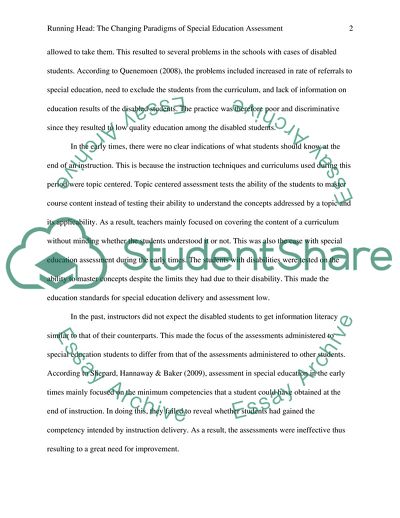Cite this document
(The Changing Paradigms of Special Education Assessment Report Example | Topics and Well Written Essays - 1250 words, n.d.)
The Changing Paradigms of Special Education Assessment Report Example | Topics and Well Written Essays - 1250 words. https://studentshare.org/education/1781280-then-and-now-the-changing-paradigms-of-special-education-assessmen
The Changing Paradigms of Special Education Assessment Report Example | Topics and Well Written Essays - 1250 words. https://studentshare.org/education/1781280-then-and-now-the-changing-paradigms-of-special-education-assessmen
(The Changing Paradigms of Special Education Assessment Report Example | Topics and Well Written Essays - 1250 Words)
The Changing Paradigms of Special Education Assessment Report Example | Topics and Well Written Essays - 1250 Words. https://studentshare.org/education/1781280-then-and-now-the-changing-paradigms-of-special-education-assessmen.
The Changing Paradigms of Special Education Assessment Report Example | Topics and Well Written Essays - 1250 Words. https://studentshare.org/education/1781280-then-and-now-the-changing-paradigms-of-special-education-assessmen.
“The Changing Paradigms of Special Education Assessment Report Example | Topics and Well Written Essays - 1250 Words”. https://studentshare.org/education/1781280-then-and-now-the-changing-paradigms-of-special-education-assessmen.


